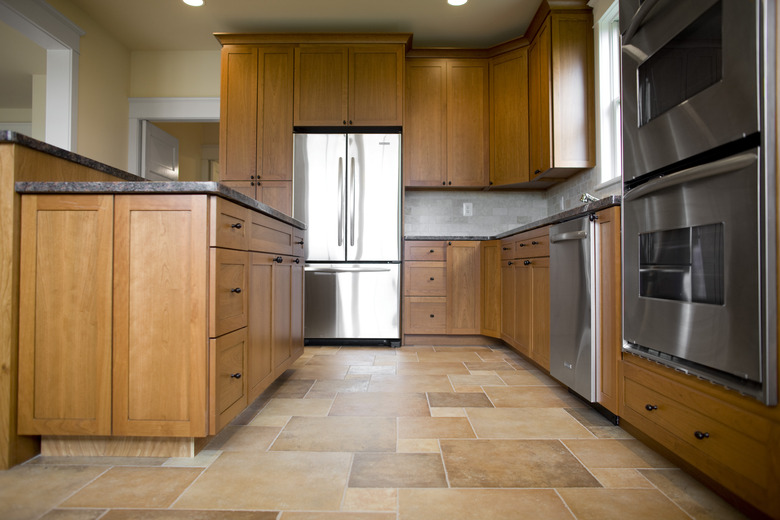Homemade Tile Grout Cleaner
Of all the surfaces in your home, the tiled ones should be the easiest to keep clean, but the opposite is often true. It isn't the tiles that are at fault, but the grout. Most grout is porous, and even if it has been properly sealed, it's one of the favorite places for mold to grow. Nothing ruins bathroom walls or a kitchen counter more effectively than moldy grout.
A good grout cleaner needs two components. The first is an abrasive that can remove surface scum and restore the natural grout color, and the second is a disinfectant. If you're like most people, you already have these two components in your cupboard or medicine chest. In fact, you could probably pick and choose among available ingredients you have on hand. And if you are wondering which combination works best, never fear. Tests have been performed, and the results are in.
As a Disinfectant, Bleach Comes in Last Place
As a Disinfectant, Bleach Comes in Last Place
Sure, bleach kills harmful bacteria and mold spores on contact, but there is more than one reason that cleaning grout with bleach is a bad idea. First of all, it's corrosive, and repeated use is bound to damage the grout, as well as anything else that bleach comes in contact, especially metal. If you spray bleach on your tiles and get some on nearby metal fixtures, the resulting stains may be impossible to remove.
The main reason you want to stay away from bleach, however, is that it won't kill the mold. It may take care of the surface layer, but because of its high surface tension, bleach doesn't penetrate porous materials like grout. It leaves the roots untouched, and the mold grows back. You can do better than bleach.
The Best Grout Cleaner Contains Baking Soda and Peroxide
The Best Grout Cleaner Contains Baking Soda and Peroxide
Even if you leave bleach out of the picture, you still have to make a choice among a number of disinfectants, including vinegar, lemon juice, Castile soap, peroxide and essential oils. Possibilities for abrasives include salt, epsom salts, baking soda and borax powder. You can go ahead and test various combinations of these ingredients yourself, but you don't have to. The proprietor of the website Bren Did performed all the tests, and the combination of baking soda and peroxide was the clear winner.
Two recipes work best. The first combines 1 cup of baking soda with 1 cup of hydrogen peroxide. The second recipe, which is a little more versatile, uses 1/2 cup baking soda, 1/4 cup hydrogen peroxide, and 1 tsp dish soap. The dish soap helps to emulsify the dirt that tends to collect on grout so it's easier to scrub off.
The Natural Way to Clean Tile Grout
The Natural Way to Clean Tile Grout
Cleaning tile grout with baking soda and peroxide is easy, but the recommended method depends on whether or not you include soap in the mixture. If you don't, just sprinkle baking soda directly in the grout, then moisten completely with peroxide, using a spray bottle. Let the mixture stand for about 10 minutes, then scrub with a toothbrush and rinse.
If you choose to add soap, you'll want to mix the ingredients in a bowl and spoon the mixture onto the grout, spreading it around with a sponge. Wait 10 minutes before scrubbing with a toothbrush and rinsing.
Can You Clean Grout with Vinegar?
Can You Clean Grout with Vinegar?
White distilled vinegar is a disinfectant that, unlike bleach, will soak into the grout and kill the mold that's hiding out there. You can't use it with baking soda, however, and your high school chemistry teacher could tell you why. Vinegar is acidic, and baking soda is alkaline. When you combine them, they neutralize each other, and they create a carbon dioxide foam. The foam looks impressive, but it has zero cleaning power.
